What’s the salary of an interpreter in the UK? And in the rest of the world? How much do freelance interpreters charge per hour? Let’s dive into the numbers!
Knowing what rates to charge is a challenge most new freelance interpreters have to face early in their careers. Universities and other training institutions, while addressing the most technical aspects of an interpreter’s job, often overlook the financial side of things.
Unlike translators, who typically charge a translation rate per word, interpreters are paid by the hour, half a day or for a full day (depending on the case.) So the main challenge for new-starters is to determine what interpreting fees they should charge for their services.
I will dedicate this post to explaining how things work in the interpreting industry. I’m a UK-based professional and this information is mostly localised for the UK interpreting market, but it may still be beneficial to you even if you’re based in a different part of the world.
There appears to be a larger discrepancy in the average interpreter’s salary (or should I just say ‘interpretation rates’) when compared to those of translators; yet again, the principles of how to charge for one’s interpreting services tend to be valid worldwide.
How Translation Rates Are Calculated
First things first: there are professional interpreters who are employed by a company or organisation. Staff interpreters are the ones who actually have a salary, since they are employees included in the company’s payroll. Not many interpreters make a living like this nowadays: most of us work on a freelance basis.
Freelance interpreting services are charged for by the hour, half day or full day. Generally speaking, the first step for a freelance interpreter is to decide on an hourly rate.
Next, depending on what type of interpreting service we are talking about, there are other things the interpreter can (and should) charge for. These include:
- Minimum Booking
- Travel Time
- Mileage and/or Travel Fares
Many assignments don’t last longer than just a couple of hours (especially in public service settings), but they may also last a full day or half a day. In such cases, instead on just an hourly rate, clients may ask you to inform them about your overall fee for:
- A full day of interpreting
- Half a day of interpreting
For assignments that last multiple days and/or involve long distance travelling, there’s also:
- Accommodation Expenses
- Travel Days
- Per Diem
- Preparation Time
The below image sums up the main rates, charges and fees when it comes to freelance interpreting:
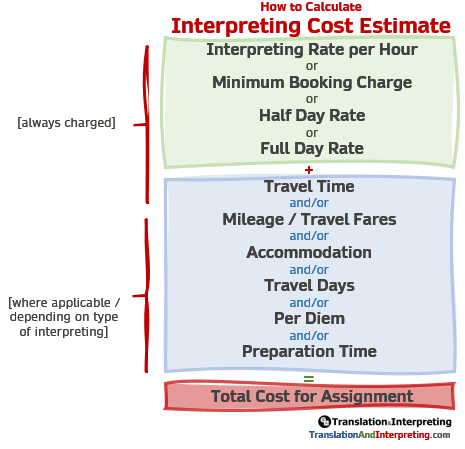
As you can see, there are many nuances to take into account. Let’s have a closer look into each of them.
What Rates Do Interpreters Charge Per Hour
There are 4 main factors to take into consideration when it comes to understanding the average market rates for interpreting:
- Language combination(s)
- Type of interpreting
- Specialism(s)
- Local market (per country)
Language Combination(s)
Some languages tend to be more pricey than others. It all comes down to supply and demand. Languages in high demand relative to the available supply tend to be more expensive than those with a lower demand.
The below table* lists some languages and splits them into different average price groups, just to give you a very rough idea.
*Note: It’s not a ‘scientific’ table, it just sums up my perception as a Project Manager who has organised many assignments over the years. If you believe it contains inaccuracies please flag them up in the comment section. Please note as well, for example, that although interpreting rates for Spanish tend to be lower than those for Mandarin, that does not mean there aren’t Spanish interpreters who charge higher rates than some Chinese interpreters.)
Language Groups | Examples |
Tier 1 Average Rates | Italian, Spanish, Portuguese, Romanian, Croatian, Serbian, Czech, Slovak, Polish, Bulgarian, Hungarian |
Tier 2 Above Average Rates | French, English, Russian, Ukrainian, Turkish, Vietnamese |
Tier 3 Costly Rates | German, Dutch, Greek |
Tier 4 Very Costly Rates | Japanese, Korean, Finnish, Danish, Swedish, Norwegian, Arabic, Hebrew, Mandarin |
In the end it’s the actual language pair (also called ‘language combination’) that ultimately influences the average interpretation rates on the market. The rarer the combination, the more expensive it tends to get.
Example: There are many more professionals qualified to interpret Mandarin/English than, say, Mandarin/Estonian. Interpreters who specialise on the latter language pair face less competition, thus having more room to increase their rates.
Types of Interpreting
I have covered the different types of interpretation on a separate post, so I’ll just assume here you are familiar with them.
In broad terms, we can say that Conference Interpreting rates are usually the highest among all types, with Consecutive Interpreting in the middle and Public Service Interpreting (PSI) at the bottom. I’ll cover each of them in more detail below.
Disclaimer: For each interpreting type, I will include an informative table to give you a very rough idea of the respective rates on the UK market. Please note again that these tables are not ‘scientific’, but just taken straight from my personal experience: I booked hundreds of interpreters as part of my job as a PM, so it’s just an ‘educated guess’.
I cannot take any responsibility for any actions you take as a result of reading this post.
Conference Interpreting Rates
Because conference events normally last either a full day or multiple days, it is common practice for conference interpreters to charge a full day rate.
Many accept being booked for less than a full day, so they set their half-day rate as their absolute minimum charge for a booking (meaning, the client has to book them for at least 4 hours even if only needs the interpreter for 1 hour.)

On top of that, they need to inform the client about their additional hourly rate in case the assignment runs over time. Interpreters can, and most definitely should, charge for any extra time they are required to work – and that applies to all interpreters, not just those who specialise in conference interpretation.
The interpreter may also charge for travel time when significant, but not overly long, commuting is involved. Mileage or travel fares (train, bus, plane, taxi, etc) should be passed on to the client and added to the interpreter’s invoice accordingly. The same applies to any accommodation costs, where applicable.
For multiple-day assignments, especially if they involve travelling long distances, a travel day charge (normally a percentage of the interpreter’s standard full day rate) should apply: that’s because the interpreter won’t be able to take any work on those days they are travelling for the event, thus some sort of compensation is only fair. A per diem should also be charged, i.e., a daily amount to allow the interpreter to pay for meals.
Finally, some interpreters also charge some extra for preparation time.
Important: You must always make sure all the above is clearly agreed with the client prior to officialising the booking. Don’t just take these things for granted: not every client will know you are expecting them to pay for all this unless it has been clearly stated. They have all the right to refuse paying you for things you haven’t specified when sealing the deal: an explicit agreement between the two sides on every point is always essential.
To sum up, here’s the table for conference interpreting (just for reference):
Conference Interpreting | Average UK Market Rates (varies largely depending on the language combination) |
Full-Day Rate | £250 - £700 |
Half-Day Rate (often used as Min. Charge) | £150 - £500 |
Hourly Rate (additional time) | £40 - £150 |
Travel Time [per hour] (mostly applicable when significant commuting is involved) | £10 - £35 |
Mileage (applicable when significant commuting is involved; alternatively, travel fares may be passed on to the client instead) | 20p-45p / mile (or cost of travel fare) |
Accommodation (if applicable) | [usually passed on to the client in full, or arranged directly by the client] |
Travel Day (when long-distance travel is involved) | 50% to 100% of standard Full Day rate |
Per Diem (depends largely on cost of living in the city where the interpreter is staying) | £30 - £150 |
Preparation Time [per hour] (must be agreed with client beforehand) | £40 - £150 |
Consecutive Interpreting Rates
Consecutive Interpreting used to be the main interpreting type for conference events, until advances in technology allowed the implementation of Simultaneous Interpretation as the standard mode.
Despite somewhat losing its spot to Simultaneous when it comes to large events, Consecutive Interpreting continues to be largely used in many settings: business meetings, interviews, press conferences, etc.

In theory, the same charges and rates that apply to Simultaneous could also apply to Consecutive. The average rates on the market, however, can be slightly lower across the board because, in addition to Conference Interpreters, Public Service Interpreters (whose rates, as we shall see below, tend to be lower) may also end up taking full-on consecutive interpretation assignments.
There’s a number of factors that cause this to happen, including the fact that conference interpreters are arguably better organised and backed up by a professional body (AIIC) that has been efficient in promoting the standards of the profession on many levels.
Consecutive Interpreting | Average UK Market Rates (varies largely depending on the language combination) |
Full-Day Rate | £150 - £600 |
Half-Day Rate (often used as Min. Charge) | £100 - £400 |
Hourly Rate (additional time) | £30 - £80 |
Travel Time [per hour] (mostly applicable when significant commuting is involved) | £10 - £35 |
Mileage (applicable when significant commuting is involved; alternatively, travel fares may be passed on to the client instead) | 20p-45p / mile (or cost of travel fare) |
Accommodation (if applicable) | [usually passed on to the client in full, or arranged directly by the client] |
Travel Day (when long-distance travel is involved) | 50% to 100% of standard Full Day rate |
Per Diem (depends largely on cost of living in the city where the interpreter is staying) | £30 - £150 |
Preparation Time [per hour] (must be agreed with client beforehand - unfortunately even harder to negotiate on consecutive assignments) | £30 - £80 |
Public Service Interpreting
Public Service Interpreting (PSI) is a form of interpretation commonly used on sectors such as Law, Health and so forth. PSI events run mostly on a Dialogue Interpreting basis, also known as ‘short consecutive’.
Rates for PSI assignments in the UK tend to be lower than Simultaneous and Consecutive interpretation, mainly because it’s the most competitive of all markets.

Sources such as Payscale suggest that the median hourly rate in the UK is around £15.00, but that some interpreters get paid as little £10.00 per hour (which is shocking.) I am not entirely sure whether these numbers are accurate, but I’ll say this either way: both values are ridiculously low and set a dangerous precedent for the profession.
You WILL struggle to make a living in the UK if you charge such low rates. Trying to undercut everybody else almost never leads to good results.
From my experience, an apparent standard practice for NRPSI-registered interpreters is to charge somewhere between £27.00 and £32.00 per hour, with a 3-hour minimum booking – which sounds a bit more reasonable.
In 2013, the government also suggested £25.00 as the recommended hourly rate for interpreters (in Legal Aid cases, specifically). Sadly, with the increasing involvement of certain agencies in this market sector, it seems less and less clients are willing to pay that.
Public Service Interpreting (often runs on a Dialogue Interpreting basis) | Average UK Market Rates (varies largely depending on the language combination) |
Full-Day Rate | £150 - £400 |
Half-Day Rate | £100 - £250 |
Hourly Rate (additional time) | £15* - £40 [*Note: In my personal opinion this is extremely low, and I honestly discourage interpreters to charge so little if they seriously intend to make a living in this industry] |
Minimum Charge | Min. 2-hour or 3-hour booking |
Travel Time [per hour] | £10 - £35 |
Mileage (applicable when significant commuting is involved; alternatively, travel fares may be passed on to the client instead) | 20p-45p / mile (or cost of travel fare) |
Accommodation (if applicable) | [usually passed on to the client in full, or arranged directly by the client] |
Travel Day (when long-distance travel is involved) | 50% to 100% of standard Full Day rate |
Per Diem (depends largely on cost of living in the city where the interpreter is staying) | £30 - £150 |
Interpreting Specialisms
Although the actual types of interpreting (simultaneous, consecutive and PSI) is a more determining factor when it comes to rates, technical specialisms may also have some influence.
The more specialised the assignment, the more skill and experience it requires to interpret. An interpreter with a vast experience in the Oil sector is in a better position to charge more for their services than an interpreter who specialises in medical appointments.
This kind of overlaps with the previous point: Public Service Interpreting is often considered a type of interpretation in its own right due to its predominant Dialogue-basis dynamics, but in a sense it’s also a specialism. It’s a prime example of a functioning supply and demand curve: there’s a high level of supply in PSI when compared to many other specialisms, hence the rates are often lower in comparison.
Local Markets: UK vs Rest of the World
It’s important to note that the UK, despite having a relatively developed and well-organised interpreting market, is not particularly expensive when compared to other countries.
In other words, UK-based interpreters often charge lower rates than interpreters based in other countries.

Not only the UK market is extremely competitive, the country (or at least the interpreting industry) is paying the price of its language’s global success. English has become the world’s lingua franca: more and more people are becoming fluent in it, and equally, there’s an ever increasing number of interpreters that have English in their language portfolio. In short, the demand is decreasing while the supply is increasing, which drives prices down.
I’ve had some limited experience with other markets such as the USA, France, Germany or Sweden, and the professionals working in all these markets tend to charge rates that often are considerably higher than those practiced in the UK. So, in conclusion, the place where you’re based does make a considerable difference too.
Conclusion
Despite the fact there is a small market for staff interpreters, the profession is largely dominated by freelancers nowadays. The rates typically charged by interpreters can vary greatly depending on things such as language combination, interpreting type, technical specialisms and the country in which the interpreter is based.
Unfortunately, the industry appears to be heading towards a worrying direction when it comes to rates, at least in the UK Public Service Interpreting market. Some professionals are undervaluing their services and charging unbearably low rates, driving the whole sector down along the way.
You should aim to set your interpreting rates at a price that makes sense to your skills and circumstances. It’s always best to value your profession fairly and, most importantly, yourself.
If you’ve found this post helpful or think it could be useful to a friend who perhaps is – or is planning to become – a translator or interpreter, please kindly consider buying me a coffee by using the button below:
I put all my heart and soul into the content I produce in order to help my fellow linguists set foot in the industry. Most of what I do is available to everyone for free.
Donating is 100% optional, but greatly appreciated. A short espresso will do! ☕






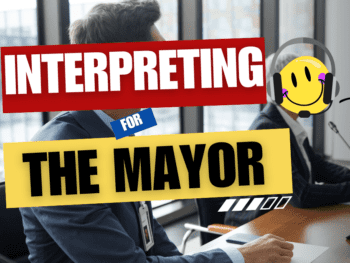
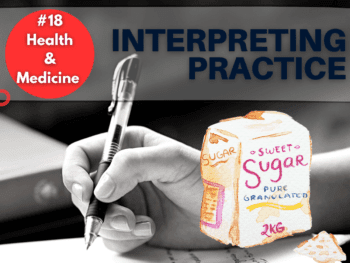
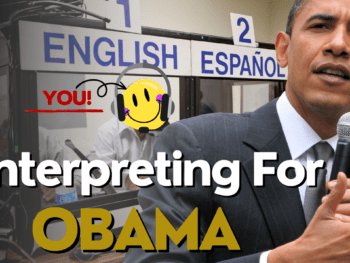
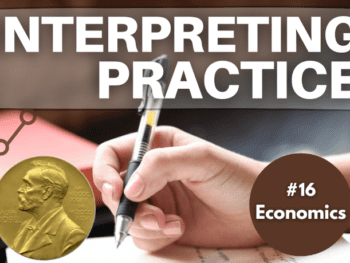



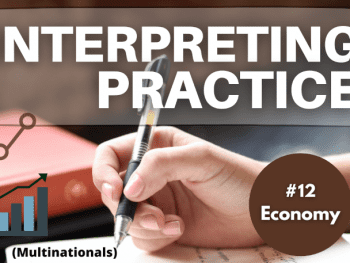

 Translation Rates: How Much Should I Charge As A Translator?
Translation Rates: How Much Should I Charge As A Translator?
Thanks for the tips, this is actually a very good guide to give us an idea. I´m finishing my conference interpretation degree and its true they don’t teach anything about rates… I’m glad I found this blog, very good info!
Hi Imogen,
I’m glad it’s been helpful, thank you so much for reading it!
Hi there,
I’ve just registered as a professional interpreter and seem to be confronting myself with a dilemma. Is the interpreter paid extra for written translations or are they included in the hourly pay rate? Is there a specific tariff for complex translations?
Thank you
Hi Mihai, normally these services are charged separately (I’m assuming you work both as an interpreter and as a translator just like me). If you’ve been hired to work as an interpreter, and your client is also sending you materials to be translated, the normal course of action would be for you to charge for your written translations on top of what you are charging for your interpreting service. I’ve written a post on how translators charge for their services, you may find it useful as well 🙂
Thanks for the content very helpful .
I’m English Arabic Turkish and French interpreter Business meetings and exhibitions. In Turkey &MENA region .
Feel free to reach me out if needs support +905072243487